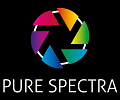Case Study: Using SWIR to measure temperature from 50 degrees Celsius and higher
One of the methods to measure temperature from 50 degrees Celsius and higher is using SWIR (shortwave infrared) imaging. SWIR imaging uses infrared light with wavelengths from 1400 nm to 3000 nm to capture images of objects and scenes. SWIR imaging is sensitive to heat, but not as much as thermal imaging, which can detect low temperatures and produce images based on the heat emitted by objects.
The principle behind SWIR temperature measurement is based on Wien’s displacement law, which states that the black-body radiation curve for different temperatures will peak at different wavelengths that are inversely proportional to the temperature. Therefore, by measuring the peak wavelength of the infrared radiation emitted by an object, it is possible to estimate its temperature.
To measure the peak wavelength of the infrared radiation, a dual or triple prism based sensor system with narrow coating is used. This system allows the sensor to see the response between certain wavelengths and compare them with a reference measurement. The reference measurement can be either a black-body source or a calibrated sensor.
SWIR temperature measurement has various applications in different fields, such as:
Industrial: SWIR temperature measurement can monitor the temperature distribution of industrial processes and detect hot spots or anomalies. For example, it can be used to measure the temperature of molten metal, glass, or ceramics.
Medical: SWIR temperature measurement can provide non-invasive and accurate diagnosis of various diseases and conditions. For example, it can be used to measure the temperature of skin lesions, tumors, or inflammation.
Environmental: SWIR temperature measurement can help assess the health and growth of vegetation and soil. For example, it can be used to measure the temperature of crops, plants, or forests.
SWIR temperature measurement is a powerful technique that can provide high-resolution and high-speed images of objects and scenes in a wide range of temperatures. It can reveal details that are hidden or obscured in the visible range and provide valuable information for various applications.


